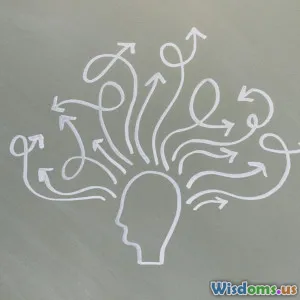
Exploring Dream Lucidity
6 min read Delve into the fascinating world of dream lucidity and discover its implications for the brain and consciousness. (0 Reviews)
Exploring Dream Lucidity
Dreams have captivated human imagination for centuries, sparking curiosity about their meaning, purpose, and the underlying mechanisms of our brain while we sleep. One particularly intriguing aspect of dreaming is lucid dreaming—the state of being aware that you are dreaming while still in the dream. This article will explore the science behind dream lucidity, its neurological basis, techniques to achieve it, and the benefits it offers for creativity and self-discovery.
What Is Lucid Dreaming?
Lucid dreaming can be defined as a state in which the dreamer becomes aware of their dreaming state and can often exert control over the dream's narrative. This phenomenon can range from mild awareness to full control over dream characters, environments, and events. Research suggests that lucid dreaming occurs primarily during REM (Rapid Eye Movement) sleep, a phase characterized by heightened brain activity and vivid dreams.
The Neurological Basis of Lucid Dreams
Understanding the brain's activities during lucid dreams helps illuminate the connection between consciousness and dreaming. Neuroimaging studies have shown that several areas of the brain are activated during lucid dreaming, particularly the prefrontal cortex, which is associated with self-awareness and decision-making. In contrast, the amygdala—the region responsible for processing emotions—may also show heightened activity, which can explain the emotional richness of many lucid dreams.
Techniques for Achieving Lucidity
While some individuals naturally experience lucid dreams, others may need to employ specific techniques to increase their chances. Here are several popular methods:
-
Reality Checks: This involves regularly asking yourself whether you are dreaming throughout the day. Common reality checks include pinching your nose and trying to breathe through it or looking at your hands and counting your fingers. If you perform these checks consistently, you may start doing them in your dreams, triggering lucidity.
-
Mnemonic Induction of Lucid Dreams (MILD): Before falling asleep, repeat a phrase like, “I will realize I am dreaming.” This technique relies on your intention to recognize the dream state, enhancing the likelihood of lucidity.
-
Wake-Back-to-Bed (WBTB): This method involves waking up after about five to six hours of sleep, staying awake for a short period, and then returning to sleep. This approach increases the chances of entering a REM phase while being aware of it.
-
Wake-Initiated Lucid Dreaming (WILD): This advanced technique involves maintaining consciousness while your body falls asleep, allowing you to enter a dream consciously. It requires practice but can lead to profound lucid experiences.
Benefits of Lucid Dreaming
Lucid dreaming is not just a fascinating experience; it can provide practical benefits for mental health, creativity, and self-discovery:
- Enhanced Creativity: Many artists, writers, and inventors report using lucid dreams as a canvas for creativity. The freedom to explore new ideas and scenarios can lead to innovative solutions and artistic inspiration.
- Overcoming Nightmares: Lucid dreaming can act as a therapeutic tool for individuals suffering from recurrent nightmares. Being aware that you are dreaming allows you to confront fears and alter the course of distressing dreams.
- Self-Exploration: Lucid dreams offer a unique opportunity for introspection. You can engage with your subconscious, explore unresolved issues, and practice self-acceptance in a safe environment.
- Improved Problem Solving: Engaging with challenges in a lucid dream state can foster new perspectives and solutions to real-life problems. The ability to manipulate dream scenarios can translate to increased problem-solving skills upon waking.
Conclusion
Exploring dream lucidity opens a door to understanding the complex interplay between consciousness and the subconscious mind. Techniques for achieving lucidity can empower individuals to enhance their creativity, confront fears, and engage in profound self-discovery. As research continues to unveil the intricacies of our dreaming minds, the potential benefits and applications of lucid dreaming become increasingly apparent. Whether you seek to explore the realm of your dreams or harness their power for personal growth, lucid dreaming offers a unique journey into the depths of the mind.
Rate the Post
User Reviews
Popular Posts





















